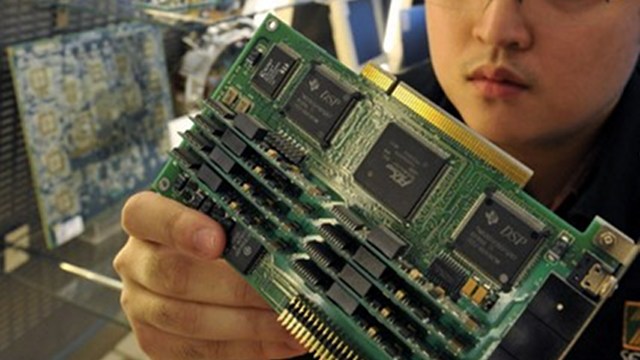SUMMARY
This is AI generated summarization, which may have errors. For context, always refer to the full article.

MANILA, Philippines – The country’s imports rose in March as mineral fuel and transport equipment shipments offset the weakness seen in the electronics sector, the Philippine Statistics Authority (PSA) said Tuesday, May 27.
Imports rose 9.6% to $5.425 billion in March from $4.952 billion in the same month last year. This brought the 3-month average to $16.168 billion, up 12% year on year.
The PSA said 6 out of the top 10 major commodities for the month recorded growth.
Top imports in March were mineral fuels, lubricants and related materials, accounting for 23.6% of total. This import group posted an annual growth of 23.3% to $1.28 billion.
This bucked the 4.3% decline in imports of electronic parts to $1.198 billion, representing a 22.1% share. Electronics imports are components used by the semiconductor and electronic industry, the largest export group and a major contributor to the economy.
Transport equipment had a 10.6% share of total imports at $576.83 million. The amount was up 56.5% from the previous year’s level.
Socioeconomic Planning Secretary Arsenio Balisacan said the latest import data were a “reflection of businesses’ more upbeat outlook on their own operations in the second quarter of 2014.”
“The volumes of business activity index and total order book index reached an all-time high of 46.1 and 39.7 index points, respectively. This is mainly due to robust expectations on consumer demand and infrastructure spending, partly boosted by the Typhoon Yolanda rehabilitation efforts during the period,” he said.
Meanwhile, imports of consumer goods reached $723.1 million in March, up by 18% from $612.7 million in the same month last year. “In particular, higher payments for passenger cars and motorcycles and miscellaneous manufactures, buoyed the total value of consumer durable segment. During the period, there was also a notable increase in domestic car sales,” noted Balisacan.
China remained the top source of the country’s imports with a 15.2% share, amounting to $825.5 million. Second was Korea with a 12% share, followed by Singapore (7.9%), United States (7.7%), Japan (7.4%), Taiwan (6.4%), France (5.6%), Thailand (4.7%), Indonesia (4.7%), and Saudi Arabia (4.2%).
The value of imported goods from ASEAN-member trading partners represented 22.4% of Philippine merchandise imports in March, equivalent to $1.2 billion worth of imported goods. The European Union supplied $712.8 million or about 13.1% of the country’s total import requirements in March. – Rappler.com
Add a comment
How does this make you feel?
There are no comments yet. Add your comment to start the conversation.